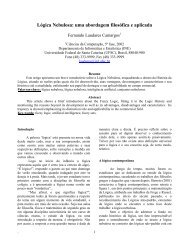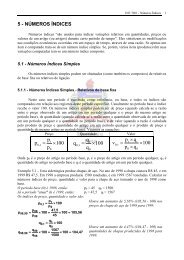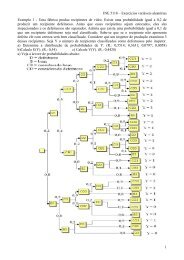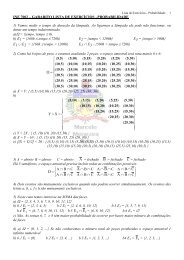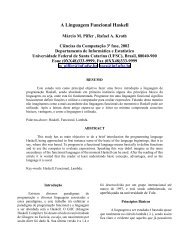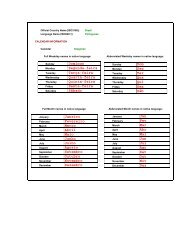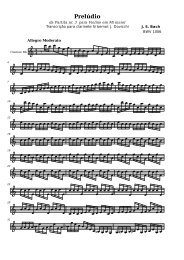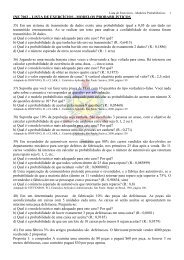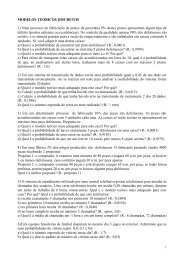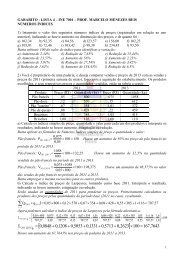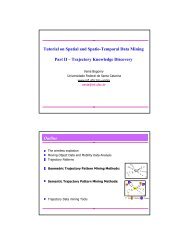common lisp hints
common lisp hints
common lisp hints
Create successful ePaper yourself
Turn your PDF publications into a flip-book with our unique Google optimized e-Paper software.
1 COMMON LISP HINTS 12NIL> (setf (foo-bar a) 3)3> a#s(FOO :BAR 3)> (foo-bar a)3setf is the only way to set the elds of a structure or the elements of an array.Here are some more examples of setf and related functions.> (setf a (make-array 1)) setf on a variable is equivalent#(NIL)to setq> (push 5 (aref a 1)) push can act like setf(5)> (pop (aref a 1)) so can pop5> (setf (aref a 1) 5)5> (incf (aref a 1)) incf reads from a place, increments,6 and writes back> (aref a 1)61.15 Booleans and ConditionalsLISP uses the self-evaluating symbol nil to mean false. Anything other than nil means true. Unless wehave a reason not to, we usually use the self-evaluating symbol t to stand for true.LISP provides a standard set of logical functions, for example and, or, and not. The and and orconnectives are short-circuiting: and will not evaluate any arguments to the right of the rst one whichevaluates to nil, while or will not evaluate any arguments to the right of the rst one which evaluates to t.LISP also provides several special forms for conditional execution. The simplest of these is if. The rstargument ofif determines whether the second or third argument will be executed:> (if t 5 6)5> (if nil 5 6)6> (if 4 5 6)5If you need to put more than one statement in the then or else clause of an if statement, you can usethe progn special form. progn executes each statement initsbody, then returns the value of the nal one.> (setq a 7)7> (setq b 0)0> (setq c 5)5> (if (> a 5)(progn



